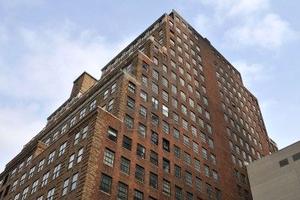Infrastructure protectionNew York's older brick buildings vulnerable
To get a better idea of just how much damage even a moderate earthquake would cause to unreinforced masonry buildings, earthquae-engineering researchers are reconstructing brick walls like those in New York City buildings that are approximately 100 years old

New York's old brick building are vulnerable in an earthquake // Source: 123rf.com
To get a better idea of just how much damage even a moderate earthquake would cause to unreinforced masonry buildings, earthquake-engineering researchers in the University at Buffalo’s Multidisciplinary Center for Earthquake Engineering Research (MCEER) are reconstructing brick walls like those in New York City buildings that are approximately 100 years old.
“We are trying to understand how the buildings will behave during earthquakes,” says Gilberto Mosqueda, an associate professor of civil, structural and environmental engineering at UB, and principal investigator on the project funded by UB’s MCEER. “In a lot of cases, due to the age of the buildings, the mortar that holds the bricks together is disintegrating. And the mortar is all that’s holding them together, making them very vulnerable, even under moderate earthquakes like the one we experienced this week.”
A University of Buffalo release quotes Mosqueda to say that the researchers, using bricks retrieved from New York City buildings slated for demolition, as well as data from testing of existing buildings, have recreated the type of mortar representative of what is there today: a particularly weak type of mortar that uses less cement and more sand.
The researchers will use the mortar to build pieces of brick walls, which they will then subject to simulated earthquakes using UB’s state-of-the-art shake tables.
The goal is to better understand how these buildings will behave when subjected to earthquake loads, so that new technologies can be developed which could best, and most quickly, address such problems.
“Strengthening buildings so they can better withstand ground motions from earthquakes would also make them better able to perform in high winds during hurricanes,” Mosqueda says.
Even without extreme events — such as this week’s earthquake and Hurricane Irene, which is predicted to hit New York and other eastern cities this weekend — century-old brick buildings throughout the U.S. are showing their age, Mosqueda says. This makes the work of UB’s MCEER that much more relevant.
“Some older, unreinforced masonry buildings in New York City are collapsing just due to their own weight or fires,” he says. “Finding out how they behave during earthquake loads — in order to develop retrofit technologies to make them stronger — would improve their performance in all sorts of hazards, such as high winds and during heavy snowfall, too.”;
